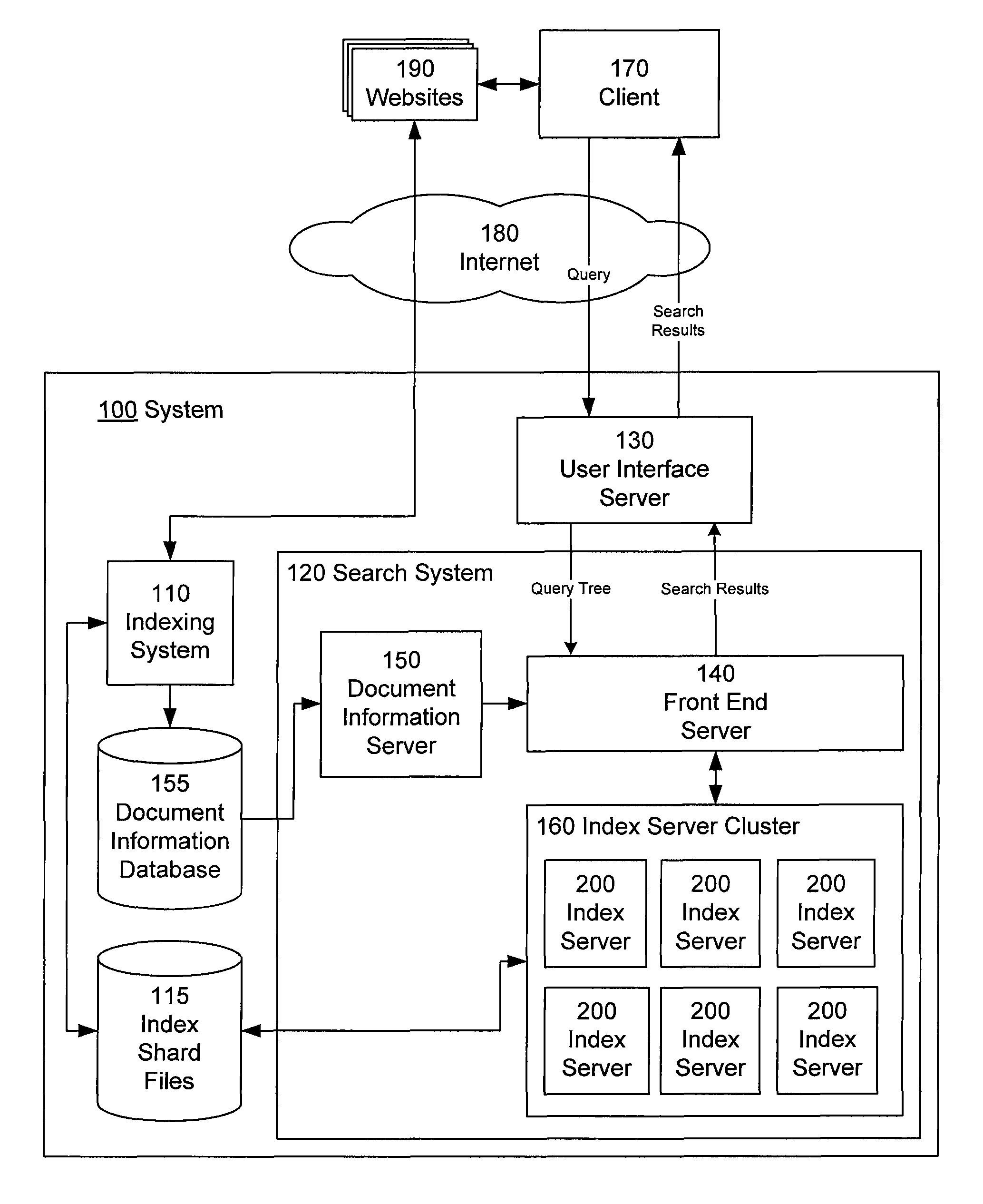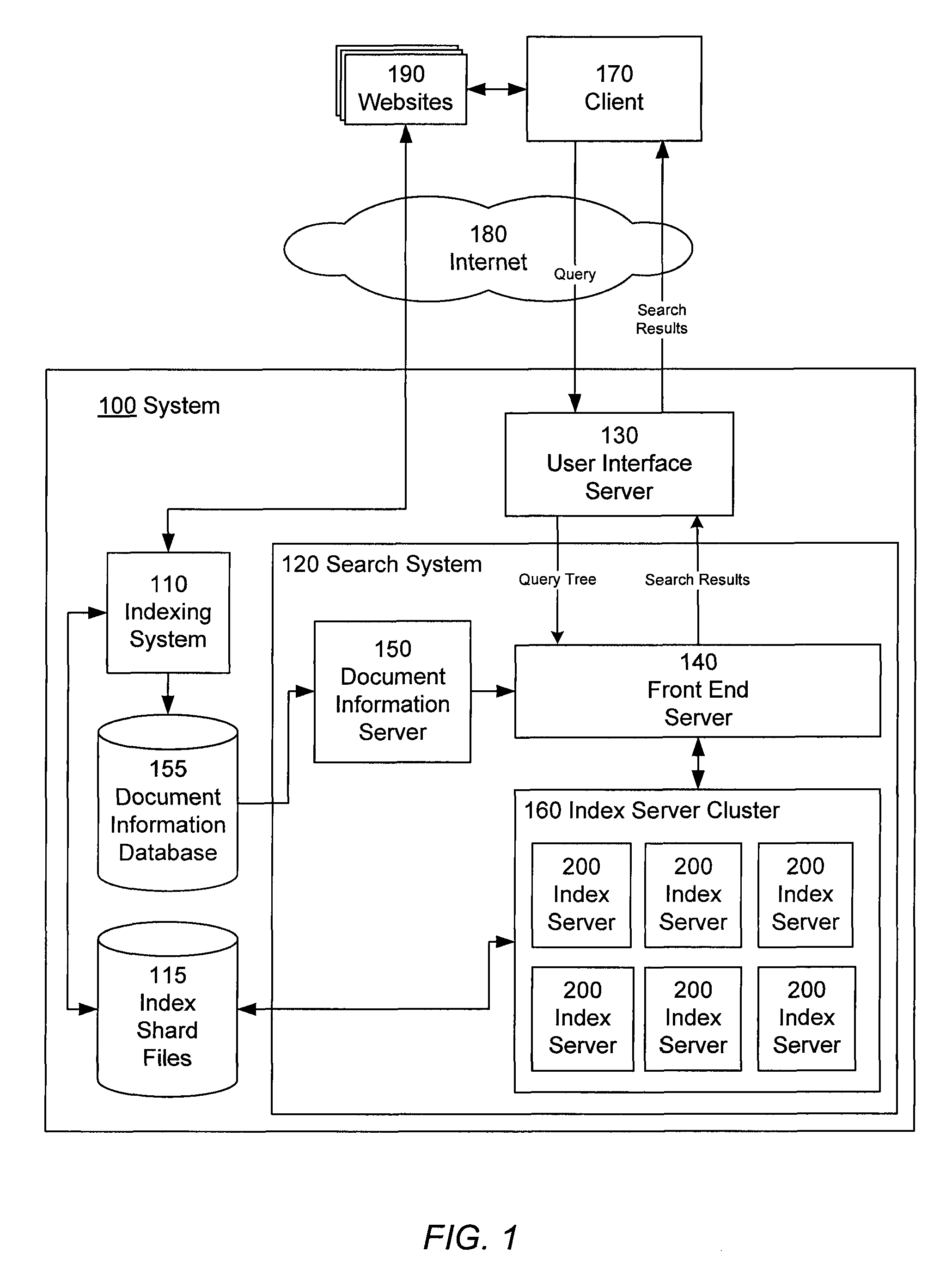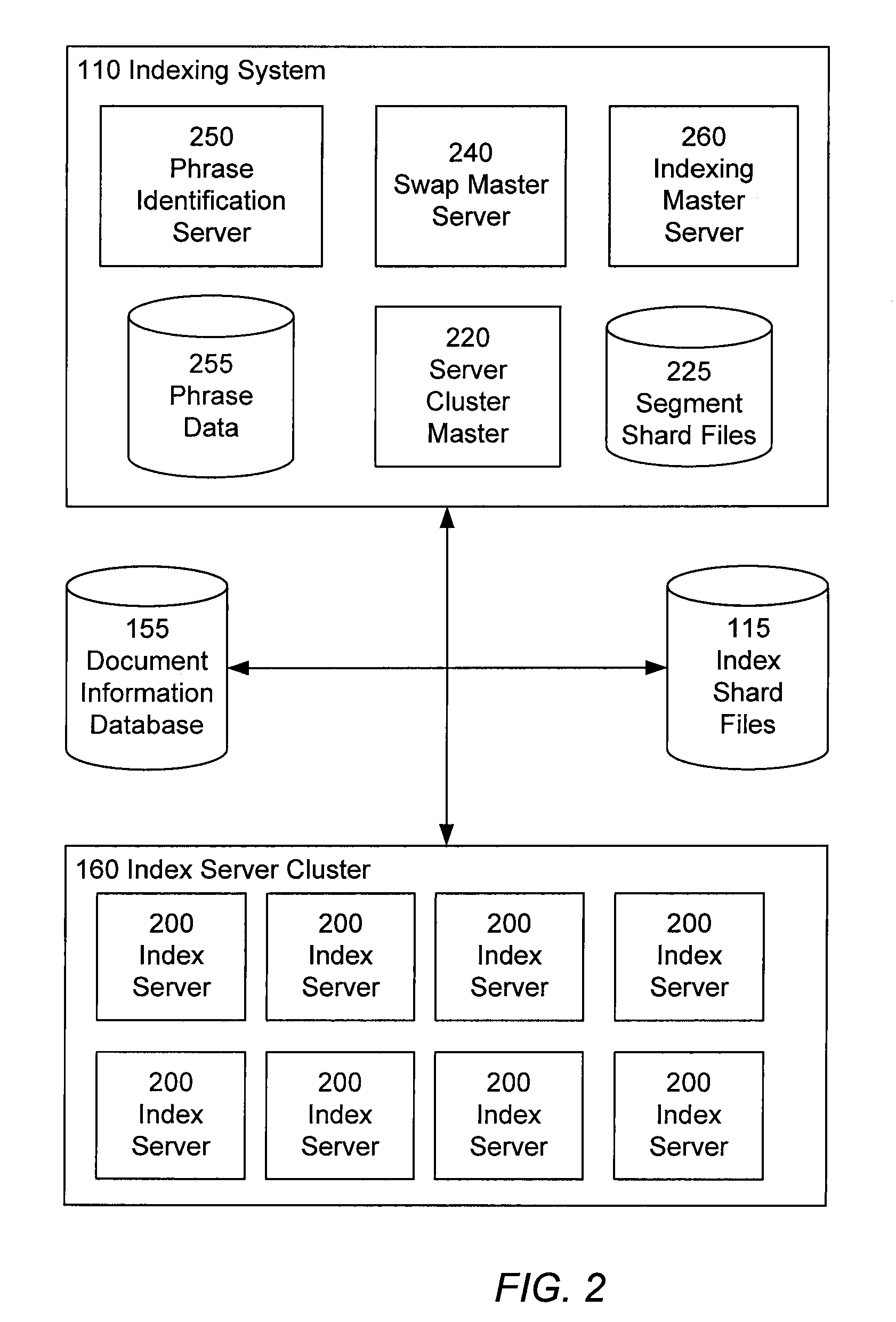Query scheduling using hierarchical tiers of index servers
a hierarchical tier and index server technology, applied in the field of information retrieval systems, can solve the problems of not typically capturing topical relationships, phrases that enter and leave the lexicon in terms of their usage, and the direct “boolean” matching of query terms has well known limitations, so as to improve query processing efficiency and reduce storage requirements for phrase posting lists
- Summary
- Abstract
- Description
- Claims
- Application Information
AI Technical Summary
Benefits of technology
Problems solved by technology
Method used
Image
Examples
Embodiment Construction
I. System Overview
[0042]Referring now to FIG. 1, there is shown the software architecture of an information retrieval system 100 in accordance with one embodiment of present invention. This embodiment of the information retrieval system 100 includes an indexing system 110, a search system 120, a user interface server 130, a set of index shard files 115, and a document information database 155. The search system 120 includes a front end server 140, a document information server 150, and an index server cluster 160 comprising a plurality of index servers 200.
[0043]The indexing system 110 identifies phrases in documents, and indexes the documents according to their phrases, by accessing various websites 190 and other document collections over the network 180, and processing documents contained therein. The indexing system 110 maintains the index information in the index shard files 115. The indexing system 110 also updates the document information database 155 with content pertaining t...
PUM
 Login to View More
Login to View More Abstract
Description
Claims
Application Information
 Login to View More
Login to View More - R&D
- Intellectual Property
- Life Sciences
- Materials
- Tech Scout
- Unparalleled Data Quality
- Higher Quality Content
- 60% Fewer Hallucinations
Browse by: Latest US Patents, China's latest patents, Technical Efficacy Thesaurus, Application Domain, Technology Topic, Popular Technical Reports.
© 2025 PatSnap. All rights reserved.Legal|Privacy policy|Modern Slavery Act Transparency Statement|Sitemap|About US| Contact US: help@patsnap.com



